What are your Forearms?
The forearms comprise the lower portion of your arm, located between the wrist and elbow. They’re composed from two bones (the ulna and the radius) as well as 20 muscles as well as a myriad of muscles and nerves. These muscles aid you in being able to rotate your forearm and also extend and stretch your fingers and wrist.
The benefits of a fitness program Your Forearms?
There are numerous benefits when you train your forearms. some are practical, while others are more visually appealing. First of all, strength in the forearms and strength of grip go hand-in-hand and both are essential for everyday activities like carrying groceries or opening the jars. Therefore, forearm muscles guarantee that you won’t have any issues opening the pickle jar ever again. Additionally, this muscle group is utilized in workouts that target different areas in your body. Therefore, doing exercises which target your forearms in particular can help you improve your the performance and technique of other aspects of your workout routine. Forearms that are strong (and as a result hands) are extremely sexually attractive. Although other areas like shoulders, abs and biceps are a source of attention, having strong and muscular forearms makes an elegant and subtle expression of masculinity.
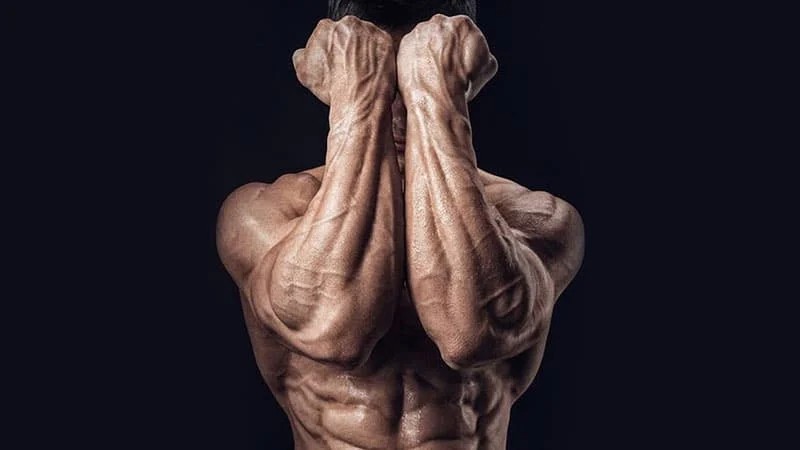
Forearm Muscles
The forearm houses 20 muscles, classified into posterior and anterior muscles. The anterior muscles, also known as flexor muscles are located inside your arm, and are responsible for bending the forearm, as well as flexing wrists and fingers. There are three layers of muscles in this area that are superficial, intermediate and deep. The muscles that are posterior or extensor are located on the outside and control the extension of wrists and fingers. They’re classified into superficial or deep muscles. Understanding the role and location of a few of the major muscles can help you maximize the benefits of your forearm exercises.
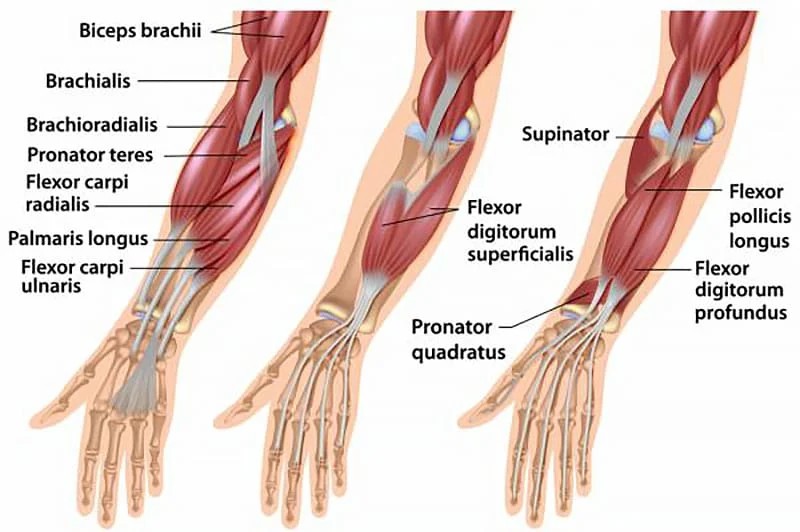
Extended Carpi Radialis Brevis
In the upper layer of the forearm’s posterior The extensor carpi radiolis Brevis is connected to the extensor carpi of radialis longus to abduct and extend the wrist.
Extended Carpi Radialis Longus
The extensor carpi of radialis longus is more slender and longer than its counterpart with the extensor carpi brvis. They work in tandem to flex and abduct the wrist.
Extensor Carpi Ulnaris
A different muscle of the forearm that is superficial is the extensor Carpi ulnaris. It functions as an extensor of wrist, in addition to abducting the hand.
Flexor Carpi Radialis
The flexor carpi and radialis muscles are located in the surface layer of the forearm’s anterior. It’s a large, thin muscle that helps in abduction and flexion of wrist.
Flexor Carpi Ulnaris
To the left from the frontal compartment flexor carpi and ulnaris. This is another way to bend your hand and also adduct your wrist.
Flexor Digitorum Superficialis
The Flexor Digitorum Superficialis is the biggest muscle in the anterior group and is the only one located at the intermediate range. It is also divided into four tendons which are affixed to the fingers. It allows the fingers to flex, and also the wrist.
Brachioradialis
While it may sound similar to it’s the name for a dinosaur the brachioradialis is actually a posterior compartment muscle which actually assists in flexing the elbow, in conjunction with the brachialis and biceps brachii in the upper arm.
Pronator Teres
Finally, the pronator teres is the one that pronates (inward moves) in the forearm. It’s located in the upper layer of the forearm’s anterior.
The Best Forearm Exercise and Workout
If you’re following a balanced training program that incorporates the use of both pulling and pushing exercises and your forearms are likely to be given a workout. But if you’re trying to address your weaknesses in general and improve your performance in other sports, and look like you’re getting even more over the top by focusing on your forearms is a great idea. These exercises for your forearms are an excellent method of separating this muscle group, allowing you to focus on increasing endurance, strength and muscle mass. Include a few or all of these movements to your routine, focusing on your forearms a couple of times a week.
1. Reverse Curls
One of the most effective exercises for your forearms to build strength and mass is the reverse curl. While most curls target the biceps, this one shifts the attention to the brachioradialis muscle through pronating the wrist in order to alter the grip. Being one of the most well-known muscles of the forearm growing in size will leave you looking like a jack of all trades. Strategies to maximize the benefits of this workout include not using your momentum when lifting the bar. Also, not letting the bar rest in your hands.
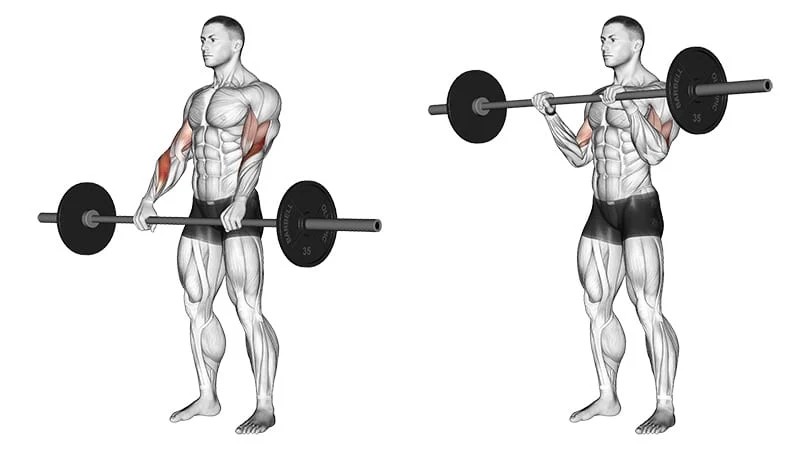
Execution
- Begin with a simple barbell or barbell loaded with your favorite weights.
- Utilize a thumbless grip for your overhand and keep them close to your fingers instead of under. By doing this, you will prevent you from putting your hands on the bars, thereby shifting your attention back towards the muscles you wish to train.
- Concentrate on press your fingers as hard as you can comfortably. A slight extension or flex of your wrists may aid in this process.
- Place your feet at a shoulder distance.
- Lift the bar to a maximum elbow bend the front of your chest, with your elbows kept closer to your sides.
- Return to where you started while maintaining control.
- If you’re looking to take it to the next stage, after you’ve completed your sets, you can add a series of curls that are top half this is where you’ll get the highest engagement.
2. Wrist Rollers
Wrist rollers may not seem like an impressive feat but they’re sure to aid in building strength. This forearm exercise is effective and works both posterior and anterior muscles through incorporating both flexion and extension actions. Additionally, it’s simple to increase the intensity by adding incremental more weights, or by increasing the amount of set. Use the most effective technique by keeping your hands more closely than your own body. This will aid in preventing deltoid burnout as well as the desire to back up and make use of momentum to lift weights. If your gym does not have a wrist roller you can purchase one inexpensively on the internet and carry it along with you.
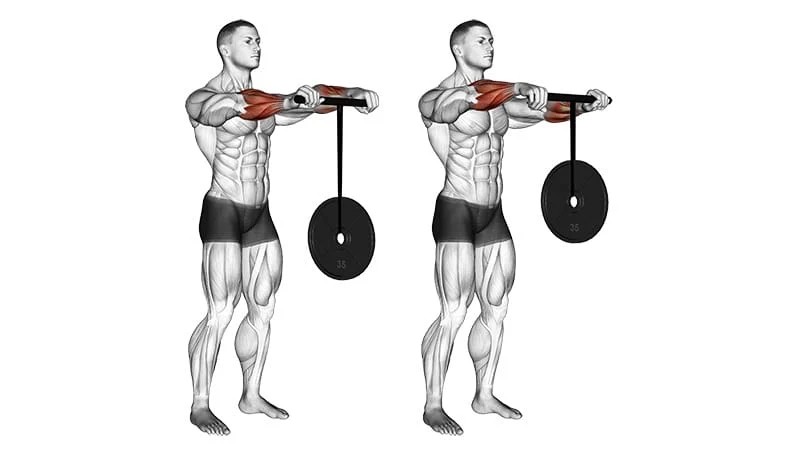
Execution
- Make sure you load your rope with an easy weight, beginning with a weight of five to ten pounds. range.
- Set yourself on a riser or box riser and hold your hands over the handle of the roller at a distance of six inches.
- While keeping your elbows bent to 90 degrees, start bringing the weight upwards, rolling your wrists inward.
- When you reach high, limit the desire to let the weight roll off (even even though it’s entertaining! ) Instead lower it with the opposite forward-rolling wrist movement.
3. Farmer’s Walk
Although a traditional farmer’s walk concentrates on the lower limbs but it’s an excellent fitness routine for all the body, and beneficial for strengthening your forearms. The weight you hold on to builds to strengthen your grip and the movement of walking causes your core to contract to counterbalance the motion. It’s also easy (in the sense of) to accomplish since all you need to do is walk around with the weights on your hand. It’s also a great exercise to get used to carrying grocery items from your car to the top of any number of staircases you have to your home.
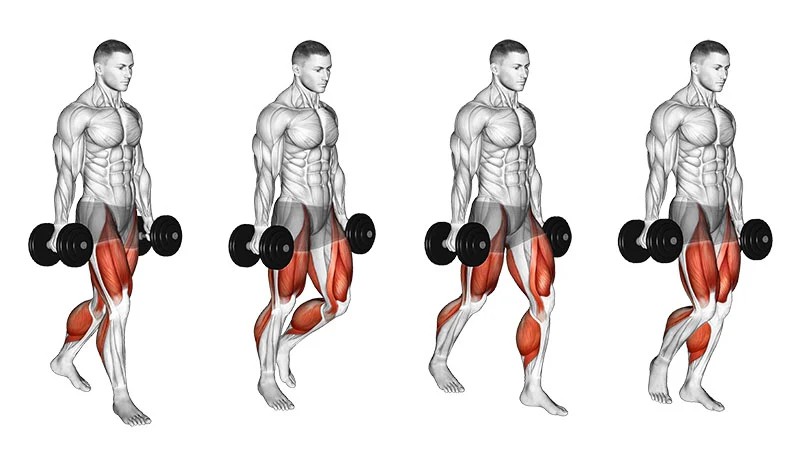
Execution
- Select your preferred weight one of dumbbells or kettlebells or kettlebells, whichever you prefer.
- Take one hand in each and keep your arms at your sides.
- Walk the distance you can or do laps if have to.
- Concentrate on keeping your body in a straight line and keep your keep your core active.
- Keep walking till you realize that your grip is beginning to break. Stop right before that point to ensure you don’t risk damaging a toe, tile or flooring.
4. Pinch Carries
Most forearm exercises utilize the crush grip instead of the pinch grip. Therefore, this exercise is designed to strengthen the flexor digitorum superioris as well as other muscles of the finger that flex. Another good reason to add this exercise to your daily routine is the capability to rectify any imbalances between right and left. It is also possible to alter your grip to concentrate on specific fingers using the thumb and a single finger grip, based on your requirements. Additionally, this is an excellent exercise that can be adapted to other sports like climbing, football and wrestling, where grip strength is a major factor.
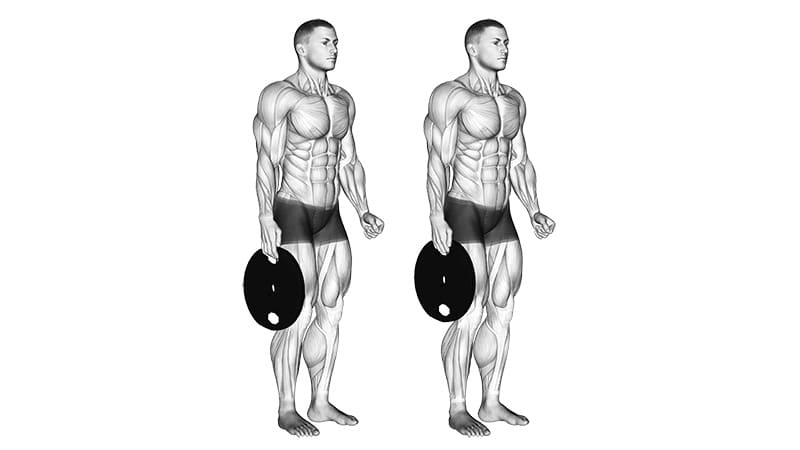
Execution
- Start with two plates that are the weight you prefer for each hand, beginning with weights of five to ten pounds.
- Grab them, then hold the two plates with a pinch grip between your fingers and thumb.
- Walk the distance you can or do laps if have to.
- Concentrate on keeping your spine straight and your the core engaged.
- Keep walking until you feel your grip is beginning to fail, and then take a break, making sure you don’t lose the weights, and possibly harm you or the gym floor.
- If you’re just beginning don’t walk for a while until you’ve gotten some endurance.
- You can use chalk if you notice that you sweating it makes your plate more difficult to hold.
5. Dumbbell Wrist Curls
A wrist curl using a dumbbell is another short but intense forearm exercise that works in the posterior compartment muscles. The exercise is performed with your arms resting on a bench to ensure you can restrict the movement to your wrist to achieve the best results. You can also overdo it through repetitions, or the weight.
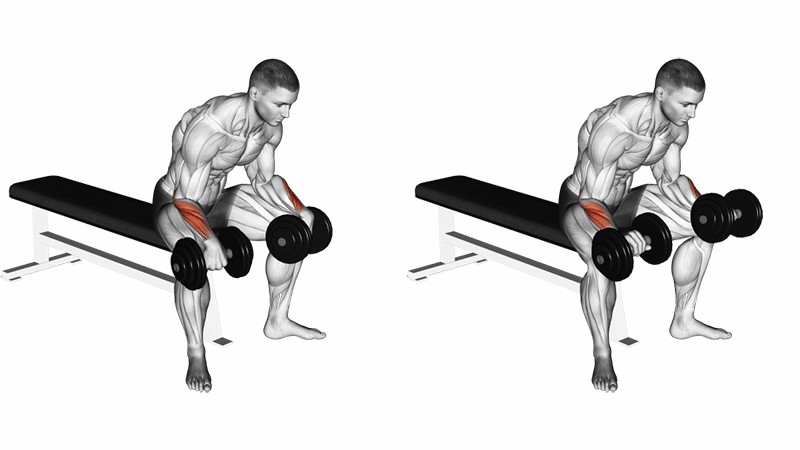
Execution
- Kneel before an unflat bench which is set at an altitude that your forearm will be able to be comfortably resting on it by placing your wrist on the side.
- Do one hand at a stretch, and use the dumbbell you have chosen with your palm facing up towards the ceiling.
- Maintain all of the forearms straight on the bench and slowly lift the weight with just the motion within your wrist.
- Lower the weight till your wrist has fully extended.
- If you’re looking to build your grip strength then you can allow the weight to drop back towards your fingers.
Forearm Workout FAQs
How can I make my forearms larger?
Grow the strength of your arms when you incorporate grip and forearm-specific exercises into your workout routine one to twice a week. Exercises such as reverse curls, wrist rollers, as well as pinch-carries are designed to isolate muscles and enable you to concentrate on gaining the strength of your forearms and increasing their mass. But, remember that this area that you are working on receives an additional workout from other push/pull exercises such as rows, deadlifts, presses, and curls too.
What is the ideal workout for you forearms?
The most effective exercise for the forearms are wrist rollers, reverse curls farmer’s carries, pinch carrying and dumbbell wrist curls.
Why are strong forearms so important?
Forearm strength is crucial along with, as a result of a strong grip, are essential since you utilize this muscle group to do a variety of things. This includes daily activities such as carrying groceries, or holding your children, not to mention the most pulling or pushing exercises at the fitness. This will enhance your workout and ease your life as there’s no peanut butter jar that you have to open! Additionally, if you’re looking strong physically to you, strong forearms can balance the rest of your strong physique.
Are pushups effective in building forearms?
Regular pushups within your fitness routine will naturally exercise your muscles in your forearms. But, if you need to focus on this region there are more effective, isolated exercises you can attempt, like wrist rollers.
What exercises can help you build bigger forearms?
The exercises that will give you larger forearms will allow you to shift your focus to this particular muscle group. This includes reverse curls, wrist rollers, pinch carry and wrist curls with dumbbells. Farmer’s walks are great for focusing on grip strength and forearm strength, while also giving the rest your body a exercise at the same time.













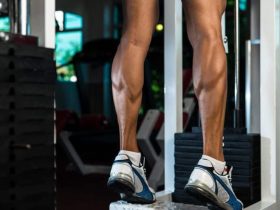





Leave a Reply